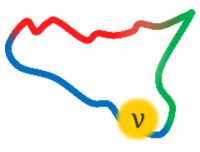Speaker
Description
Over the last decade, searches for sub-GeV particle Dark Matter (DM) candidates have rapidly advanced. Light Dark Matter particles detection represents a challenge because it requires sensitivity to faint nuclear recoils and thus very low energy threshold ($\mathcal{O}(0.1)$ keV). At the same time, accessing lower cross-section ranges demands high-mass targets. The BULLKID-DM experiment aims to reconcile these requirements by employing a monolithic array consisting of a stack of silicon wafers, carved in dices of
$5.4\times5.4\times5$ mm$^3$, yielding a total mass of $800$ g and over $2000$ dice. Particle interactions within each die generate phonons, which are detected by Kinetic Inductance Detectors (KIDs). However, the calibration of such large amount of single detectors is technically complex since the phase responsivity of each KID depends on the resonators' properties and on the applied readout power. We describe a possible reconstruction algorithm to extract the resonant frequency shift signal $\delta f_0/f_0$ in a manner that it is independent of individual KID charachteristics - such as quality factor and resonant frequency - and has limited dependance on the resonator's bias power.

